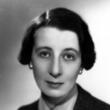The murder room
Description
More Details
9780141015538
9780571218226
9781400042647
9780739353622
Excerpt
Similar Series From Novelist
Similar Titles From NoveList
Similar Authors From NoveList
Published Reviews
Booklist Review
After 16 novels, James is still able to find insular communities of professionals in which to set her crimes. This time it's the staff of a quirky museum devoted to England between the wars. The piece de resistance of the museum's collection is the Murder Room, in which are gathered artifacts from famous homicides that took place during the interwar years. Naturally, the room plays a crucial role, both as setting and as backstory, when real-life murder comes to the museum. It starts not in the Murder Room but in a garage, where one member of the family-owned museum is incinerated after being doused with petrol. That the victim was lobbying to sell the museum, over the objections of his sister and brother, only adds fuel to a fire that Scotland Yard Commander Adam Dalgleish is asked to extinguish. As always, James delves deeply into the psyches of her characters--in this case, the museum's staff--uncovering not just motives and secrets, the stuff of any crime plot, but also the flesh and bone of personality. Her novels follow a formula in terms of the action and the setting, but her people rise above that pattern, their complexity giving muscle and sinew to the bare skeleton of the classical detective story. And none so much as Dalgleish himself, who now must contend with tremors of precarious joy as his feelings for Emma, a Cambridge professor he met in Holy Orders (2001), force a life-changing decision. James, at 83, has mastered the trick of repeating herself in ever-fascinating new ways. --Bill Ott Copyright 2003 Booklist
Publisher's Weekly Review
Neither the mystery nor the detective present James's followers with anything truly new in her latest Adam Dalgliesh novel (after 2001's Death in Holy Orders), which opens, like other recent books in the series, with an extended portrayal of an aging institution whose survival is threatened by one person, who rapidly becomes the focus of resentment and hostility. Neville Dupayne, a trustee of the Dupayne Museum, a small, private institution devoted to England between the world wars, plans to veto its continuing operation. After many pages of background on the museum's employees, volunteers and others who would be affected by the trustee's unpopular decision, Neville meets his end in a manner paralleling a notorious historical murder exhibited in the museum's "Murder Room." MI5's interest in one of the people connected with the crime leads to Commander Dalgleish and his team taking on the case. While a romance develops between the commander, who's even more understated than usual, and Emma Lavenham, introduced in Death in Holy Orders, this subplot has minimal impact. A second murder raises the ante, but the whodunit aspect falls short of James's best work. Hopefully, this is an isolated lapse for an author who excels at characterization and basic human psychology. (Nov. 18) Forecast: This BOMC main selection, with its 300,000 first printing, is likely to do as well as other recent titles in this sterling series, despite its weaknesses. (c) Copyright PWxyz, LLC. All rights reserved
Library Journal Review
Remember Emma Lavenham from Death in Holy Orders? Yes, Commander Adam Dalgliesh is still in love with her. But murder at the Dupayne Museum, which is threatened with closure, puts a damper on the relationship. It is especially chilling that the crime scenes are made to resemble paintings in the museum's infamous "Murder Room." With a six-city author tour. (c) Copyright 2010. Library Journals LLC, a wholly owned subsidiary of Media Source, Inc. No redistribution permitted.
Kirkus Book Review
A beleaguered private museum on the edge of Hampstead Heath provides James's latest lethal biosphere. The lease on Dupayne Museum, devoted to the cultural history of England between the two world wars, is about to expire, and all three of founder Max Dupayne's children have to endorse the terms of any renewal. Marcus Dupayne, the museum's de facto manager, and his sister Caroline, joint principal of the exclusive Swathling's School, are nervously eyeing psychiatrist Neville, who's determined to take this opportunity to veto the museum out of existence--until he's killed in circumstances that recall a famous murder memorialized in the museum. Though his siblings are obvious suspects, much more is at stake than their welfare. The entire staff, from curator James Calder-Hale to receptionist Muriel Godby to housekeeper Tally Clutton, depend in different ways on the museum's survival, and Calder-Hale's involvement brings in Commander Adam Dalgliesh's elite Special Investigation Squad to shine a pitiless light on them all. It's a signal achievement of the ceremonious investigation that even after it's revealed the sad truth about three violent deaths, most readers will be sorry to take their leave of a cast that seems to have still more depths to plumb. Despite a plot less ineluctable than her best (Death in Holy Orders, 2001, etc.), James creates another teeming world in which murder is only the symptom of a more pervasive mortality. Copyright ©Kirkus Reviews, used with permission.
Booklist Reviews
/*Starred Review*/ After 16 novels, James is still able to find insular communities of professionals in which to set her crimes. This time it's the staff of a quirky museum devoted to England between the wars. The piece de resistance of the museum's collection is the Murder Room, in which are gathered artifacts from famous homicides that took place during the interwar years. Naturally, the room plays a crucial role, both as setting and as backstory, when real-life murder comes to the museum. It starts not in the Murder Room but in a garage, where one member of the family-owned museum is incinerated after being doused with petrol. That the victim was lobbying to sell the museum, over the objections of his sister and brother, only adds fuel to a fire that Scotland Yard Commander Adam Dalgleish is asked to extinguish. As always, James delves deeply into the psyches of her characters--in this case, the museum's staff--uncovering not just motives and secrets, the stuff of any crime plot, but also the flesh and bone of personality. Her novels follow a formula in terms of the action and the setting, but her people rise above that pattern, their complexity giving muscle and sinew to the bare skeleton of the classical detective story. And none so much as Dalgleish himself, who now must contend with tremors of "precarious joy" as his feelings for Emma, a Cambridge professor he met in Holy Orders (2001), force a life-changing decision. James, at 83, has mastered the trick of repeating herself in ever-fascinating new ways. ((Reviewed September 15, 2003)) Copyright 2003 Booklist Reviews
Library Journal Reviews
Remember Emma Lavenham from Death in Holy Orders? Yes, Commander Adam Dalgliesh is still in love with her. But murder at the Dupayne Museum, which is threatened with closure, puts a damper on the relationship. It is especially chilling that the crime scenes are made to resemble paintings in the museum's infamous "Murder Room." With a six-city author tour. Copyright 2003 Reed Business Information.
Library Journal Reviews
James's latest mystery revolves around a small private London museum whose trustees are embroiled in a bitter dispute over whether it should be closed. When Neville Dupayne, the trustee in favor of closure, is brutally murdered in a manner reminiscent of one of the notorious historical crimes featured in the museum's Murder Room, Commander Adam Dalgliesh and his team are called to investigate. This is soon followed by a second killing. At the same time, the long-widowed Dalgliesh is struggling to come to terms with his growing feelings for Cambridge professor Emma Lavenham (who first appeared in Death in Holy Orders). Will his love life finally be resolved? In what might be the swan song for the octogenarian Baroness James and her brilliant but aloof poet/detective, The Murder Room features all the usual Jamesian elements: the cool, measured prose, the fully fleshed, morally complex characters, the shocking, eerie crimes, and the detailed plot littered with clever red herrings. For most mystery collections. [Previewed in Prepub Alert, LJ 8/03; BOMC main selection.]-Wilda Williams, "Library Journal" Copyright 2003 Reed Business Information.
Publishers Weekly Reviews
Neither the mystery nor the detective present James's followers with anything truly new in her latest Adam Dalgliesh novel (after 2001's Death in Holy Orders), which opens, like other recent books in the series, with an extended portrayal of an aging institution whose survival is threatened by one person, who rapidly becomes the focus of resentment and hostility. Neville Dupayne, a trustee of the Dupayne Museum, a small, private institution devoted to England between the world wars, plans to veto its continuing operation. After many pages of background on the museum's employees, volunteers and others who would be affected by the trustee's unpopular decision, Neville meets his end in a manner paralleling a notorious historical murder exhibited in the museum's "Murder Room." MI5's interest in one of the people connected with the crime leads to Commander Dalgleish and his team taking on the case. While a romance develops between the commander, who's even more understated than usual, and Emma Lavenham, introduced in Death in Holy Orders, this subplot has minimal impact. A second murder raises the ante, but the whodunit aspect falls short of James's best work. Hopefully, this is an isolated lapse for an author who excels at characterization and basic human psychology. (Nov. 18) Forecast: This BOMC main selection, with its 300,000 first printing, is likely to do as well as other recent titles in this sterling series, despite its weaknesses. Copyright 2003 Reed Business Information.






















































